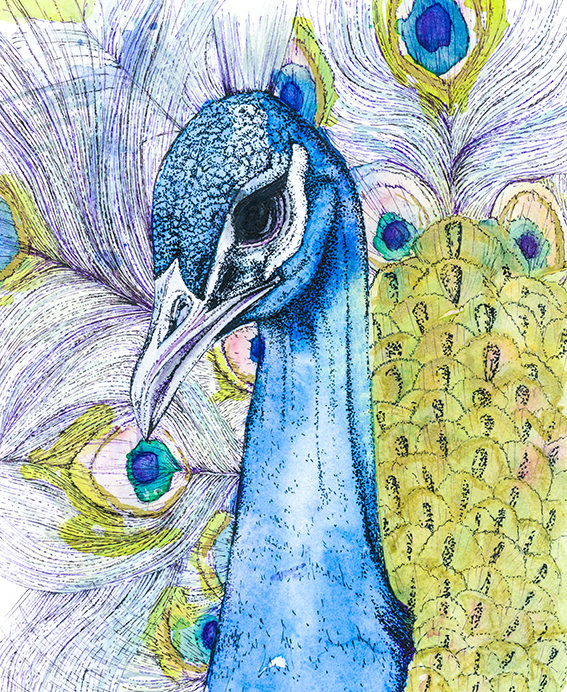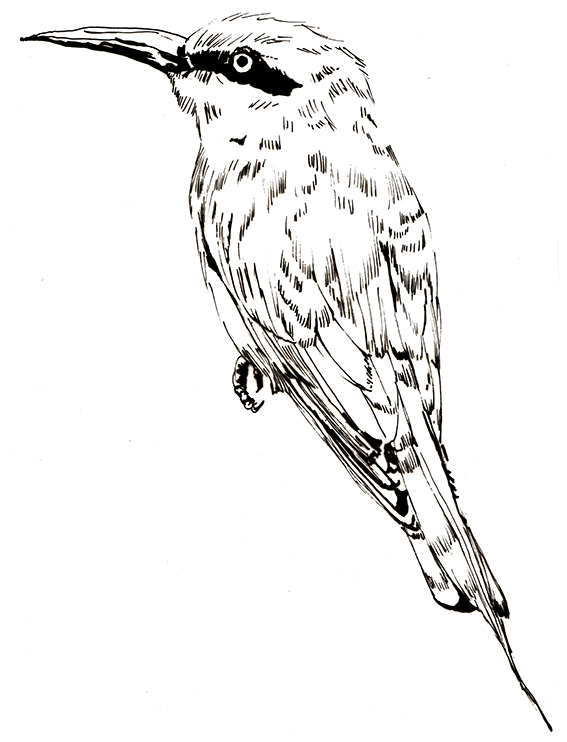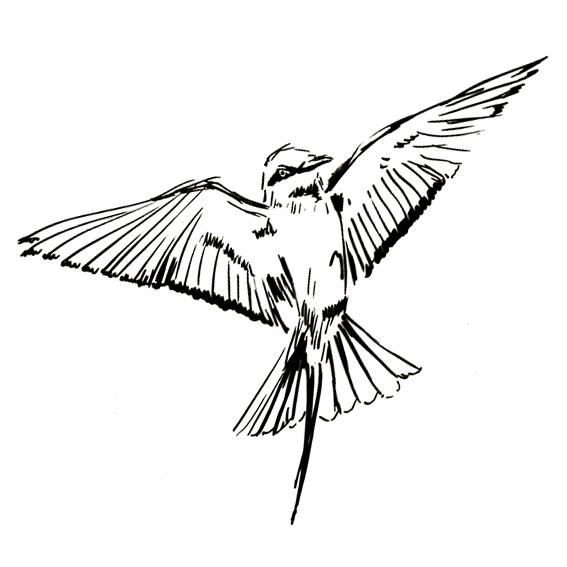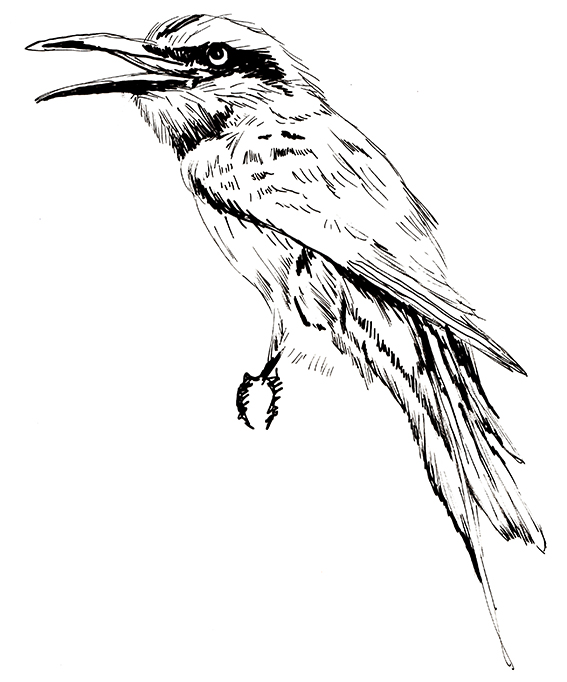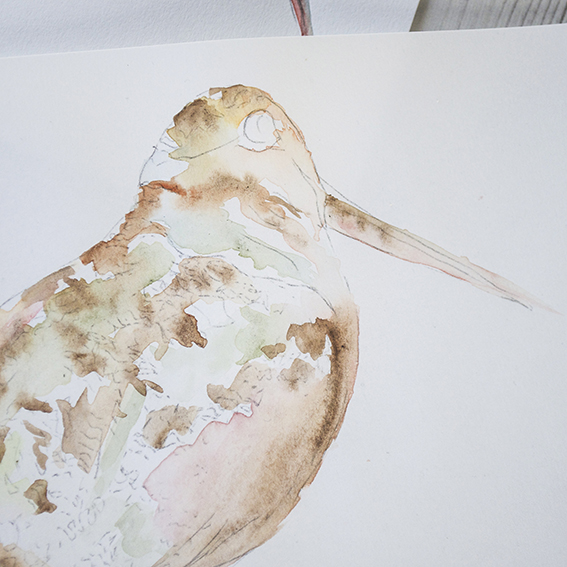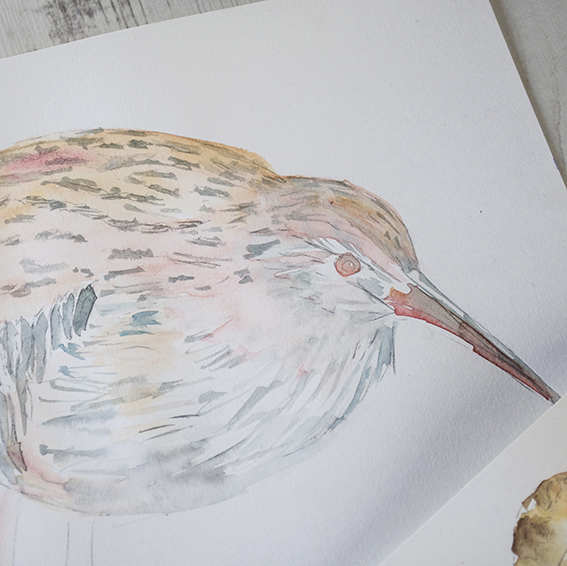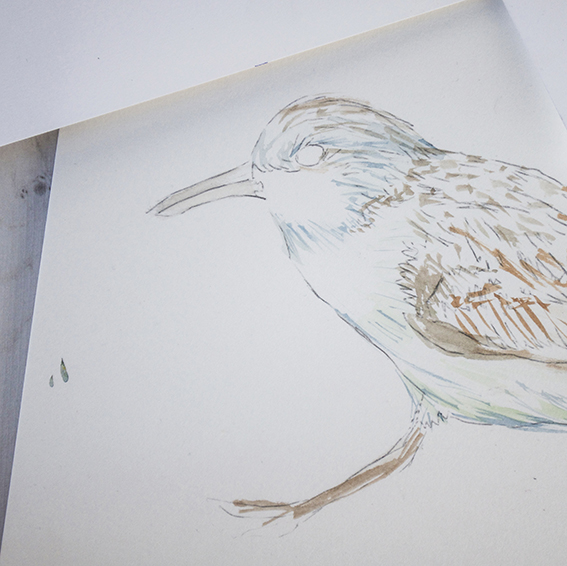September drawing of the month: Strutting godwit
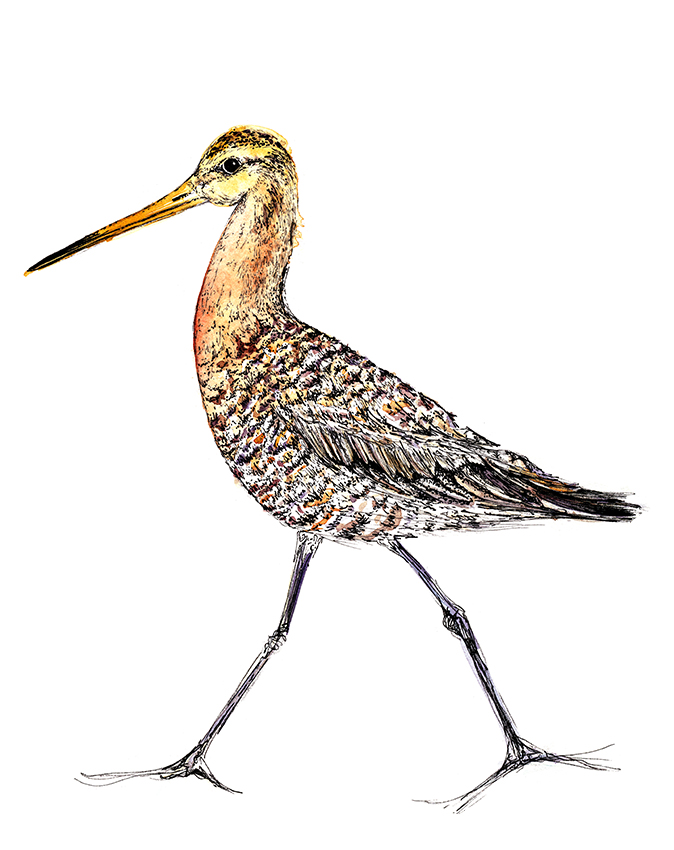
So pleased to be kicking off my regular illustration posts with my strutting godwit as September’s drawing of the month.
I think godwits are my favourite bird (at least today they are – it’s a bit like picking a favourite song or album for me, it depends on the day, the mood, how I’m feeling etc). You can expect to see godwit bird illustrations coming up quite a few times on my drawing of the month posts.

This godwit is sporting his spring/summer mating plumage. I remember seeing an omniscience of godwits (Isn’t that a lovely collective noun? I could have also used “a prayer of godwits” or “a pantheon of godwits”) with their gorgeous russet breasts and soft golden feathers on Iken cliffs and I was practically moved to tears by the birds’ stunning colours and graceful countenance. By the way, if you haven’t been to Iken cliffs it is well worth a visit, it’s one of my favourite places on earth. So atmospheric and serene in any weather.
I created this drawing using Winsor and Newton watercolours on hot-pressed watercolour paper. I then added detail using the Uniball uni-pin pen. These pens have different nib sizes which offer fantastic versatility when working on something like feathers. You can see me start to overlay this pen detail in the video below.
